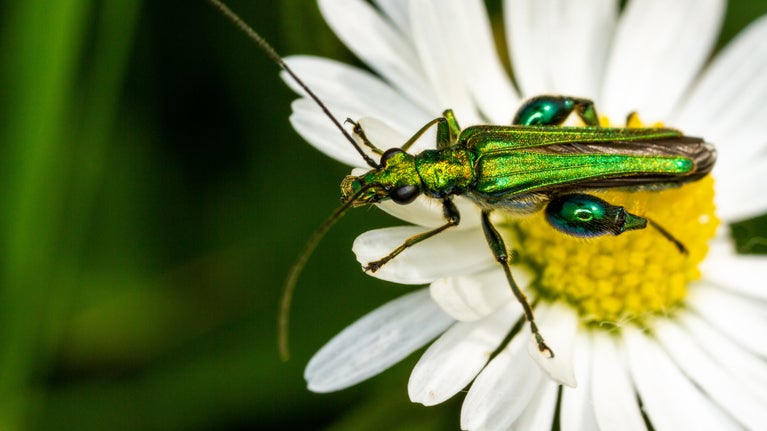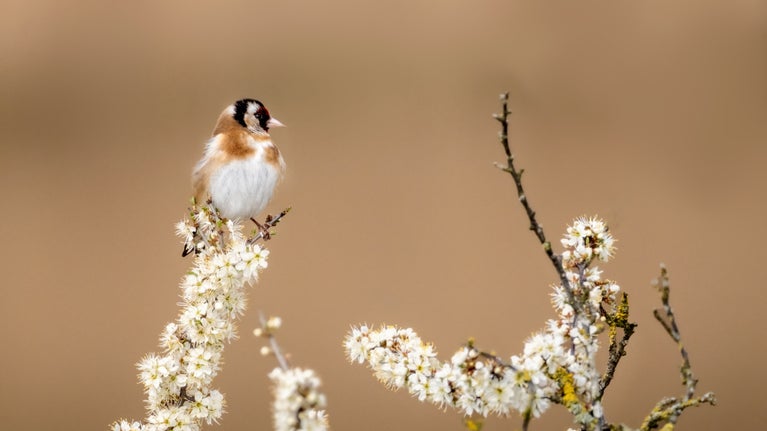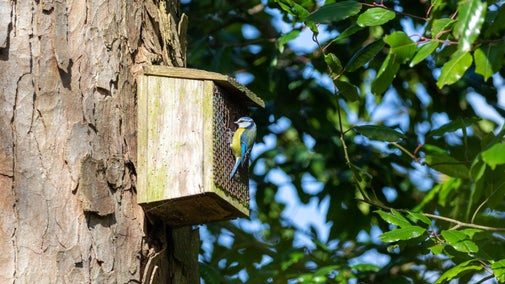
Get closer to wildlife
Discover tips for spotting mammals, birds and insects each season and learn about the range of wildlife at the places we look after.

The activity and types of birds are one of the ways we mark the changing seasons, from the noise and bustle of spring to migratory birds coming or going in autumn, and winter’s feeding frenzy. Discover what birds you may spot and where to see them, whether that's in your local area or at the places we look after. Please remember to not feed waterbirds while you're out enjoying some birdwatching.
If you’re confused between two species, try reading about them and then seeking each species out in its natural habitat. The more you read up on its description and the more you experience its behaviour, the better you’ll get at spotting it.
Understanding the structure of birds’ bodies and the terms used – particularly for different groups of feathers – is useful knowledge to have to hand in the field, especially when using identification guides.
Always avoid feeding waterbirds such as ducks and swans. To safely feed garden birds, follow these top tips:
• Buy accredited bird food from reputable sources
• Only provide food for a few days or feed in moderation to avoid food going off
• Keep bird feeders separated so birds aren’t in too close contact
• Regularly clean and disinfect feeders
• Wash your hands thoroughly after handling bird feeders/faeces
Spring is a season of rapid change and activity for birds, and a great time of year to get out and see what you can spot.
In early spring, winter visitors like fieldfares (colourful thrushes with an upright, purposeful hopping movement) and redwings (small thrushes with a distinctive cream strip above the eye and red-orange patches below their wings) head back to their breeding grounds. Meanwhile, resident birds will be busy nesting.
The places in our care are home to a wide variety of native and visiting birds. Here’s what to look out for in spring and where to see some of these incredible moments in nature’s calendar:
Bird migration has fascinated people for millennia. And now science is unravelling the mystery, revealing that the birds’ journeys are even more amazing than we had thought.
The uplifting sight of migratory birds like swallows, swifts and house martins signify summer for many of us as they start to arrive in late spring.
Swallows glide gracefully, low to the ground or in treetops. They have a red throat, white underside and a distinctive forked tail with streamers. Swifts live on the wing and, as their name suggests, they fly fast and high. They’re a dark sooty brown, with a short forked tail and crescent-shaped wings in flight. House martins are smallest of the three and have the shortest wings, zooming around in flocks at mid-height. They have a short forked tail, blue-black upper parts and a pure white underside.
At Croome in Worcestershire, large numbers of house martins and swallows return to their nests at the RAF buildings and the Court each year, while the stableyard is the home of choice for swallows at Ilam Park in Derbyshire. At Longshaw in the Peak District, there are more than 100 nesting boxes to welcome rare pied flycatchers (smaller than house sparrows, with a distinctive white patch on the folded wing) as they arrive from Africa.

With many of our summer breeders departed, it’s time to welcome our winter visitors.
After breeding in Arctic Canada, light-bellied brent geese fly to spend winter in Ireland, north-west England and Wales. These geese are small – about the same size as a mallard duck – with dark heads, and adults have a small white patch on the neck. Around 90 per cent of their population will winter at Strangford Lough in Northern Ireland.
For some species, the numbers arriving tell a story of conditions elsewhere. For the waxwing, an unusual, plump, pinkish and crested bird, it's feast or famine. Usually a couple of hundred birds arrive in the UK every winter. But if the berry crop in Scandinavia and Eastern Europe is meagre then tens of thousands come.
Here are some of the birds you might see arriving for the winter, from shoreline to farmland:
Feeding garden birds in winter is one of the easiest ways to get close to wildlife.
The number and variety of birds you’ll see through the season is likely to be driven by the weather. In mild conditions, you may only have small numbers of your regular feathered visitors. But a cold snap could get exciting as more birds arrive in search of food and unfrozen water sources.
The RSPB’s Big Garden Birdwatch happens every January and is a great way to take part in some citizen science from the comfort of your home.
Find out about the Big Garden Birdwatch
Here are some of our favourite garden birds with plumage to brighten your winter:

Discover tips for spotting mammals, birds and insects each season and learn about the range of wildlife at the places we look after.

The Royal Society for the Protection of Birds is a charitable organisation registered in England and Wales and in Scotland.
There are more than 600 known bird species in the UK and their calls are an important clue when bird spotting. Listen to our selection of distinctive birdsongs to get you started.

If you’d like to see more birds in your outdoor space, discover how you can make a simple bird feeder with just a few items and ingredients.

Encourage birds to visit your garden or outdoor space throughout winter and early spring by making these nourishing fat cakes. They're also a great way to make use of your food scraps and yoghurt pots.

Looking for new ways to help your local wildlife? Here are some of our top tips on how to make your garden a haven for animals, birds and insects.

Learn what you’ll need to do to give you the best chance of seeing a feathered friend, whether you’re watching birds on the window sill or walking through a forest. Take part in ‘50 things to do before you’re 11¾’ activities.
